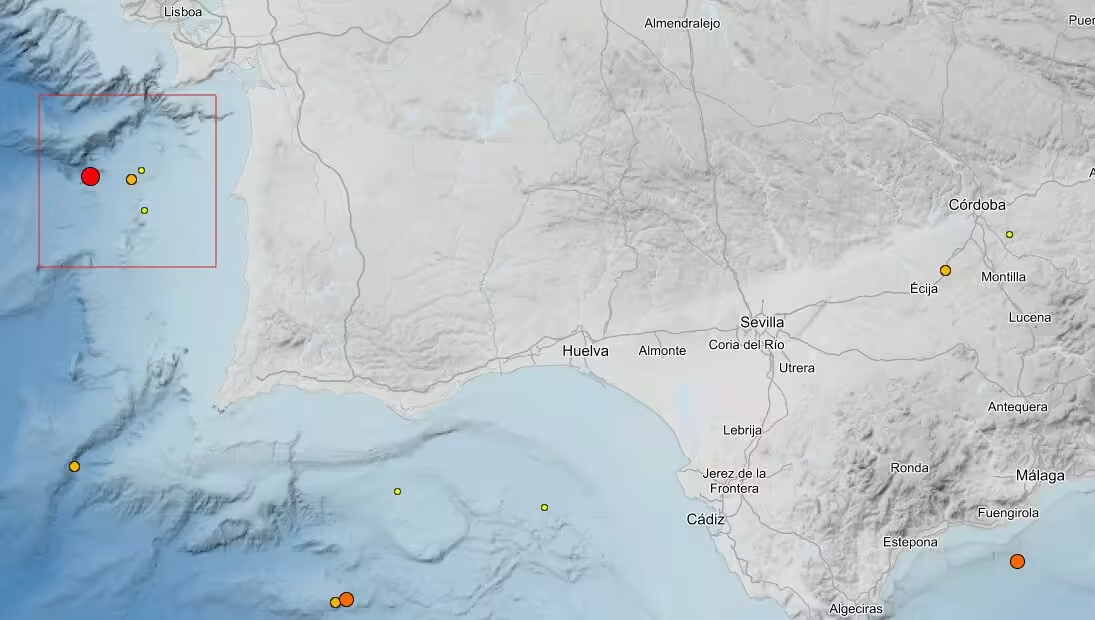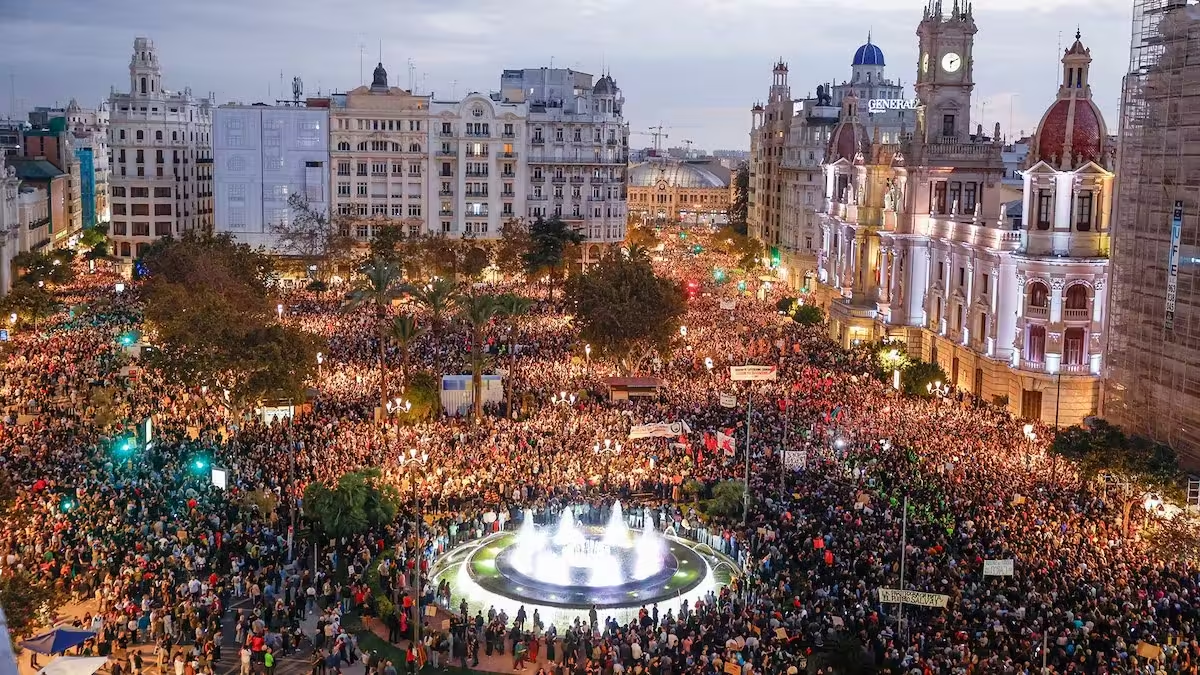Portugal Earthquake of 5.5 Felt in Andalucía
On Monday, August 26, a magnitude 5.5 earthquake on the Richter scale jolted southern Portugal and several areas in southern Spain. The quake struck in the Atlantic Ocean, south of Lisbon, at 6:11 am (Spanish mainland time) at a depth of 19 kilometers, according to the National Geographic Institute (IGN).
Where Did the Earthquake Make an Impact?
In Andalucía, the earthquake was most strongly felt in Huelva and Sevilla. In towns close to the Portuguese border, such as Jabugo, Cortegana, and Lepe, the tremor was recorded at intensity level III, meaning it was noticeable but did not cause significant damage. Carrión de los Céspedes in Sevilla also experienced this intensity.
In Cádiz, towns like Jerez de la Frontera and Sanlúcar de Barrameda felt the quake at intensity level II, while in Málaga, Jaén, and Granada, it was felt more mildly. Córdoba also reported the tremor in places like Alameda del Obispo and Montilla.
The 112 Emergency Services received over 15 calls from various Andalucian towns reporting the quake, but no personal or material damage has been reported. Sevilla’s City Council confirmed that the tremor was felt in areas such as Triana and Reina Mercedes Avenue without causing significant issues.
Impact on Other Regions in Spain
The earthquake was not limited to southern Spain; it was also felt in other parts of the country. In Galicia, the tremor was more strongly felt in towns in Pontevedra and Orense. In Extremadura, towns like La Zarza and Villafranca de los Barros experienced the quake at intensity level III, while in Cáceres it was felt at intensity level II.
Why Was Andalucía Affected?
The Geological and Mining Institute of Spain (IGME) explains that the earthquake was felt in Andalucía due to the northwest direction of the seismic waves from the epicenter in the Atlantic. Although the earthquake was relatively mild, vibrations were noticeable in taller buildings, causing minor movements such as the shaking of glassware.
Recommendations and Precautions
Even though the earthquake did not cause significant damage, it’s important to know how to respond in case of a quake. Here are some recommendations from the National Geographic Institute:
Before the Earthquake:
- Keep a first aid kit, flashlights, bottled water, non-perishable food, a whistle, a battery-operated radio, and a fire extinguisher on hand.
- Identify safe areas in your home and learn how to turn off water, electricity, and gas.
- Know the emergency service phone numbers.
During the Earthquake:
- Stay away from furniture, windows, and lamps indoors.
- Outside, avoid buildings, walls, and electrical poles.
- If driving, stop the car in a safe location.
After the Earthquake:
- Avoid using elevators.
- Follow the instructions of authorities and official organizations.
In summary, while the magnitude 5.5 earthquake was a reminder of seismic activity in the region, it did not cause major problems. The key is to be prepared and stay calm.
Image: IGN
Share this content:




Post Comment